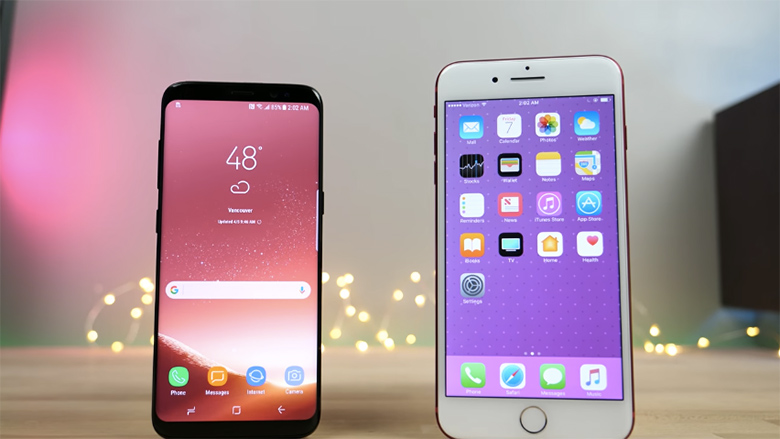Ultimate Smartphone Comparison Tool: Find Your Perfect Phone
Introduction
Smartphones are now an essential part of our lives in this fast-paced digital world. Choosing the right smartphone can be overwhelming, whether you need it for gaming, photography, business, or everyday use. With so many brands, models, and specifications to choose from, thorough research is necessary to make an informed decision. This is where a smartphone comparison tool comes in handy.
A smartphone comparison tool allows you to compare multiple smartphones based on price, performance, battery life, camera quality, and other factors. This article will explore how to use these tools, the benefits they offer, and the best ones available to help you find the perfect phone.
Why Use a Smartphone Comparison Tool?
The features, specifications, and prices of smartphones vary greatly. A smartphone comparison tool helps you:
Save Time – Instead of manually checking each phone's specs, a comparison tool presents all the details in one place.
Make Educated Choices – Compare several models side by side to find the one that best suits your requirements.
Check Real-World Performance – Some tools offer user reviews and benchmark results to help you evaluate performance.
Compare Prices – Get the best deals by comparing prices from different retailers.
Find the Best Features – Whether you prioritize camera quality, battery life, or gaming performance, a comparison tool helps you identify the best phone for your needs.
Key Features to Consider When Comparing Smartphones
When using a smartphone comparison tool, focus on these key aspects:
1. Performance (Processor & RAM)
A phone's speed and smoothness are determined by its processor (CPU) and RAM. Some of the top processors include:
Apple A-series (A17 Bionic, A16 Bionic) – Used in iPhones, known for their high performance.
Qualcomm Snapdragon (8 Gen 2, 7 Gen 1) – Found in Android flagship and mid-range devices.
MediaTek Dimensity (9200, 8100) – Used in many affordable and mid-range phones.
Exynos (Samsung's in-house processor) – Powers some Galaxy devices.
More RAM (8GB, 12GB, or 16GB) ensures better multitasking and gaming performance.
2. Display
The display affects your viewing experience. Important aspects include:
Size & Resolution – Standard displays range from 6.1 inches to 6.8 inches, with resolutions like Full HD+ (1080p), Quad HD+ (1440p), or 4K.
Refresh Rate – A higher refresh rate (90Hz, 120Hz, or 144Hz) results in smoother scrolling and gaming.
Panel Type – AMOLED displays provide richer colors and deeper blacks compared to LCD screens.
3. Camera Quality
Cameras are a major deciding factor for many buyers. Look for:
Megapixels – Higher megapixels don’t always mean better quality. Software processing and sensor size are more important.
Number of Lenses – Phones often have wide, ultra-wide, telephoto, and macro lenses.
Optical Image Stabilization (OIS) – Helps reduce blur in photos and videos.
AI Features – AI enhancements improve night mode, portrait shots, and HDR processing.
4. Battery Life & Charging
Battery performance depends on capacity (mAh), software optimization, and charging speed.
Battery Capacity – Most modern smartphones have 4000mAh to 5000mAh batteries for all-day use.
Fast Charging – Phones now support 30W, 65W, or even 120W fast charging, reducing charge time significantly.
Wireless Charging – Flagship devices support 15W to 50W wireless charging.
5. Software & Operating System Updates
The two most popular operating systems for smartphones are:
Android – More customization options, available in brands like Samsung, Google, OnePlus, and Xiaomi.
iOS – Exclusive to Apple iPhones, known for its smooth performance and long-term software updates.
Consider how many years of software updates and security patches a phone will receive.
6. Price & Value for Money
Smartphones come in different price ranges:
Budget Phones ($100-$300) – Best for basic use (e.g., Motorola G Series, Samsung A Series).
Mid-Range Phones ($300-$600) – Balanced performance and features (e.g., Google Pixel 7a, OnePlus Nord, Samsung Galaxy A74).
Flagship Phones ($700-$1200) – Top-tier performance (e.g., iPhone 15 Pro, Samsung Galaxy S24 Ultra, Google Pixel 8 Pro).
Gaming & Foldable Phones ($1000-$2000) – Premium options for gamers and tech enthusiasts (e.g., ASUS ROG Phone, Samsung Galaxy Z Fold 5).
Top Smartphone Comparison Tools to Use
1. GSMArena
✅ In-depth smartphone specifications and comparisons. ✅ Expert and user reviews. ✅ Performance benchmarks and camera samples.
2. PhoneArena
✅ In-depth reviews and comparisons. ✅ Interactive comparison charts. ✅ Price tracking and deals.
3. Kimovil
✅ Shows global pricing and comparisons. ✅ Performance benchmarks and gaming tests. ✅ Battery performance ratings.
4. Versus
✅ AI-driven smartphone comparisons. ✅ Easy-to-understand score-based system. ✅ User-friendly interface with pros and cons lists.
5. 91Mobiles
✅ Provides comparisons based on price, specifications, and features. ✅ Pricing focused on the Indian market. ✅ Includes user and expert reviews.
How to Use a Smartphone Comparison Tool Effectively
Step 1: List Your Priorities
Decide what matters most: camera, battery life, gaming performance, price, or software support.
Step 2: Shortlist 3-5 Smartphones
Use comparison tools to filter smartphones based on your needs.
Step 3: Compare Side by Side
Check key aspects like performance, display, cameras, and battery life.
Step 4: Read Expert & User Reviews
Look for in-depth reviews on websites like GSMArena, PhoneArena, and YouTube.
Step 5: Compare Prices & Deals
Use pricing tools to find the best offers before making a purchase.
Conclusion
Choosing the right smartphone doesn’t have to be complicated. With the help of smartphone comparison tools, you can easily analyze specifications, performance, and prices to find the perfect device. Whether you’re looking for a budget phone, flagship model, or gaming beast, these tools simplify the decision-making process.
So, before making your next smartphone purchase, use a comparison tool to ensure you get the best value for your money. Happy shopping!


